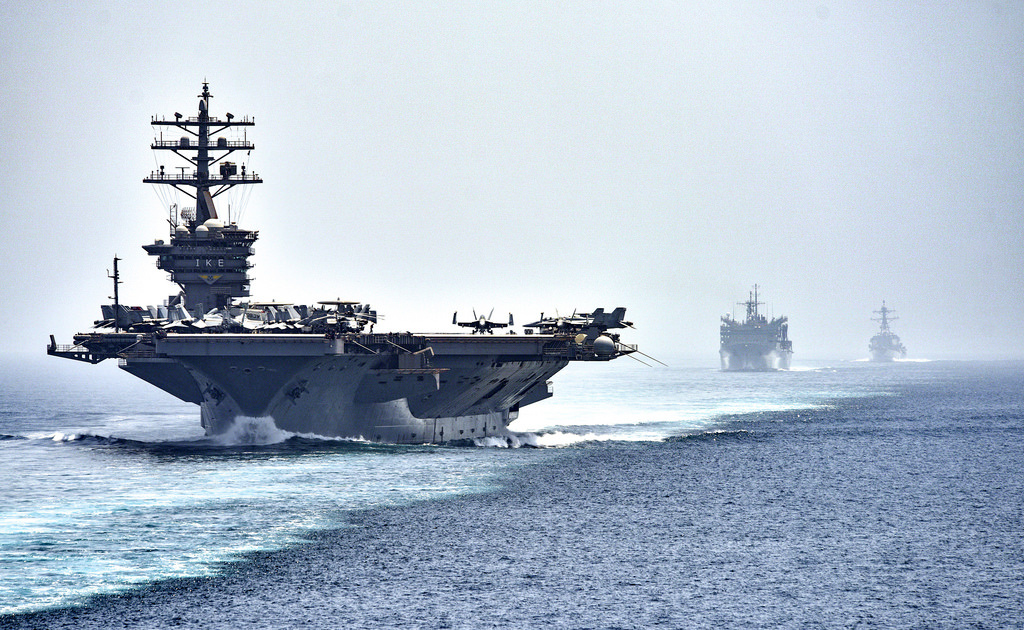
America’s experience in the Middle East over the past fifteen years has been bruising, to say the least. For his part, President-elect Donald Trump has repeatedly, if inconsistently, exploited Americans’ frustration with what are widely viewed as foreign policy failures in Afghanistan, Iraq, Libya and Syria. At a rally last month, Trump promised to “stop racing to topple foreign regimes that we know nothing about,” adding that “this destructive cycle of intervention and chaos must finally come to an end.” On the other hand, Trump has also used brazenly hawkish rhetoric and has filled his cabinet with people not at all averse to bold U.S. interventionism.
Trump’s inconsistencies aside, it seems voters welcomed his blunt criticisms of U.S. military action in the Middle East. But scrutiny of U.S. foreign policy in the region should go beyond a potent skepticism of regime change or exasperation with chasing after terrorists. In addition to our ill-fated nation-building effort in Afghanistan and the fight against ISIS, the traditional rationale boils down to oil. As it turns out, though, forward deployment isn’t all that useful in securing the free flow of oil.
Overall the United States has approximately 35 thousand troops in the Middle East. Those that are based in Kuwait (about 13 thousand) and in Bahrain (about five thousand) are most explicitly about energy security, although various U.S. bases across the region cooperate in that role. This forward deployed military presence is supposed to achieve four basic energy security objectives: (1) protect against the rise of a regional hegemon that could gain control of energy resources; (2) deter any external power from gaining a foothold in the region; (3) dampen regional rivalries and stave off a war that could disrupt supply; and finally, (4) deter or rapidly reverse any attempt to close the Strait of Hormuz, a critical chokepoint through which 30 percent of the world’s seaborne oil passes.
But do permanent peacetime military forces really serve these objectives? According to Charles L. Glaser and Rosemary A. Kelanic, “the conventional wisdom, which holds that U.S. oil interests in the Persian Gulf are so large and threatened that the United States must dedicate large military capabilities to their defense” is wrong. Danielle F. S. Cohen and Jonathan Kirshner go so far as to call the belief in “energy insecurity”—common among policymakers and some academics—“a myth,” and “an erroneous belief that national security requires ambitious and vigilant foreign policy measures to assure adequate access to energy.”
Indeed, the United States today is far less reliant on foreign oil supplies than it once was. In 2015, only about 24 percent of the petroleum consumed by the United States was imported from foreign countries (the lowest level since 1970), and only about 16 percent of that was imported from the Middle East. This is largely because U.S. domestic production has significantly increased thanks to technological advances in exploiting shale reserve areas. Since 2008, annual U.S. crude production has grown by about 75 percent and net import volumes are projected to decline by 55 percent by 2020. Canadian oil output is also expected to double by 2040, meaning North America is on track to be a net oil exporter by 2020 and to remain so through 2040.
More importantly, oil is a fungible commodity traded on global markets and subject to the laws of supply and demand. Supply disruptions from one source impact the overall price, but can quickly be offset by an increase in output from another source. In every oil shock since 1973, global energy markets adapted quickly, by increasing production from other sources, rerouting existing supplies and putting both private and government-held stockpiles around the world into use. These market adjustments mitigated the ramifications of the shocks and stabilized prices and supply. U.S. military presence in the Persian Gulf did not prevent the disruptions, nor did it ease the resulting economic pain.
In addition, the balance of power globally and in the region today is favorable for energy security. First, an external power gaining a stranglehold over the Persian Gulf region is implausible. The Soviet Union is long gone and today’s Russia suffers from systemic economic problems that hinder its potential to project power in the Middle East. China, while increasingly powerful in its own sphere, lacks the political will to dominate the Gulf.
